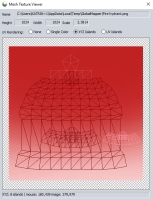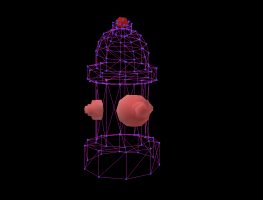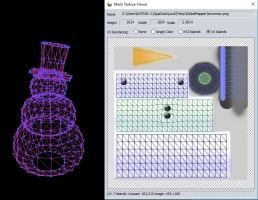In this example the fire hydrant starts with only one component. The mesh texture viewer shows that there are 8 separate XYZ islands. Some of the details in the hydrant do not share vertices, so after partitioning by XYZs, the fire hydrant on the right contains multiple sub-meshes, only one of which is shown selected.




